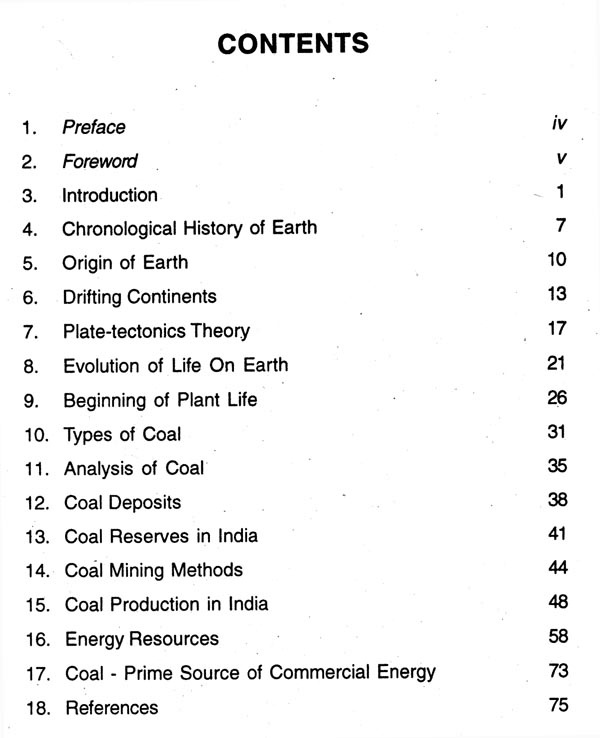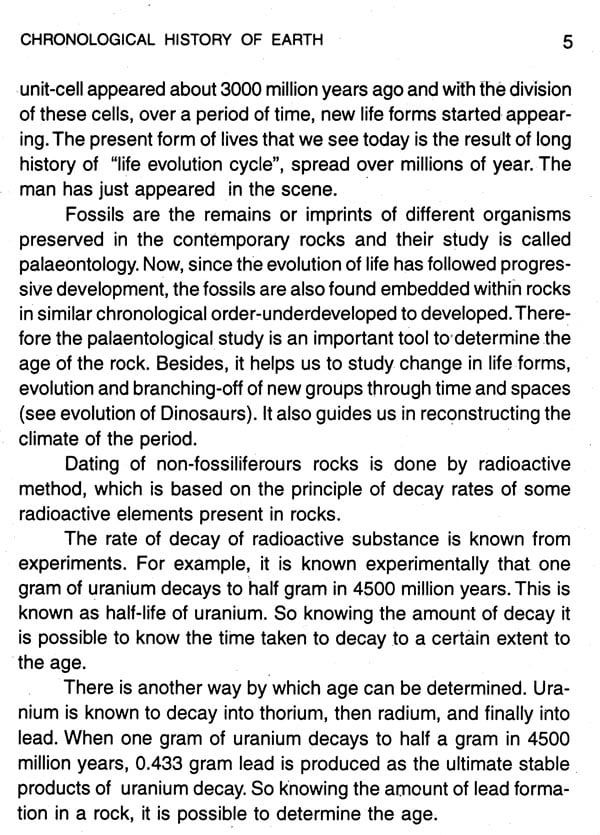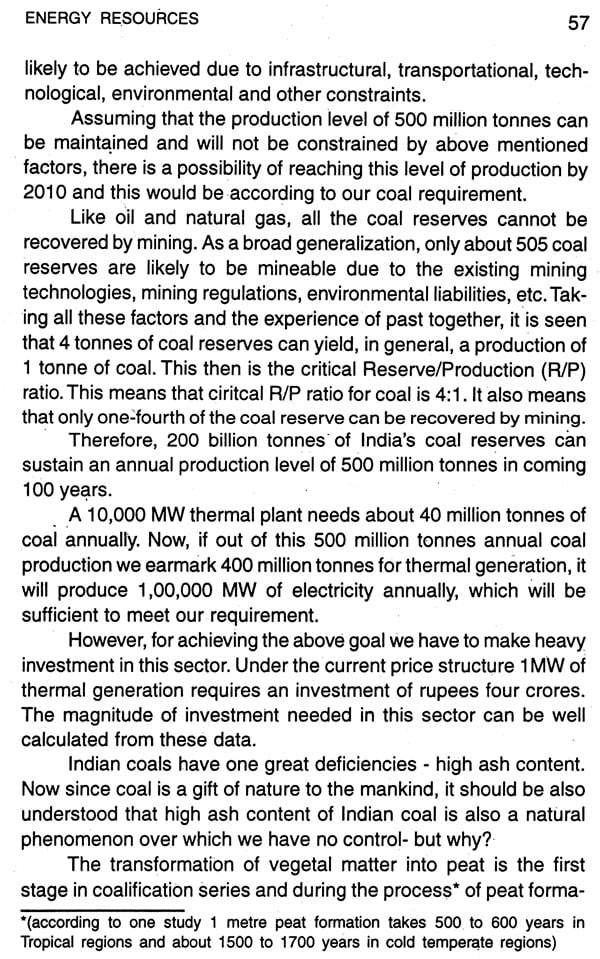
The Story of Black Diamond Coal
Book Specification
| Item Code: | NAU790 |
| Author: | S.K. Pande |
| Publisher: | Publications Division, Government of India |
| Language: | English |
| Edition: | 2002 |
| ISBN: | 8123010540 |
| Pages: | 66 |
| Cover: | PAPERBACK |
| Other Details | 8.50 X 5.50 inch |
| Weight | 120 gm |
Book Description
Coal as a source of energy and chemicals, is one of the most valuable gifts of nature to mankind. Beginning with the origin of the universe, the solar system and the earth, this book narrates the chronological evolution of life on earth. The changing environment on earth resulted in luxuriant growth of trees which sank in swamps in multiple layers which were gradually converted to peat, to lignite and ultimately to coal. The coal deposits of the world, the reserves in different coal fields of India, the properties and uses of coal etc. have been described in some detail.
S.K. Pande, Put the author is a retired Chief General Manager (Exploration), (MPDI) Coal India Ltd. He received National Mineral Award 1989-90 and Dr. Gorakh Prasad Science Award-2000.
Originally, I have written this book in Hindi because I strongly feel that more and more books should be written in the mother-tongue of the reader. This would help them in better understanding of the subject which in turn encourage them to think and produce original work.
The Hindi book "KOYLE KEE KAHANI" has been published in mid 1999 by the Publications Division of the Government of India. Infact it is the only book on Indian coal written after a lapse of 40 year gap. Therefore, this book is a reproduction of the original book in Hindi. Although, the title of the book is "The Story of Black Diamond-COAL', but while explaining as to how Coal was formed, the entire gamut of Earth's history is unfolded step by step before the reader - such as Big Bang and Origin of the Earth, Continental Drift and Plate Tectonics, Advent of Life - their evolutions and extinction, rise of the Himalayas and their seismic sensitivity, documentation parameters of earth's chronological history, importance of environment protection, origin of coal and its occurrences/quality/reserves/ mining methods/production, history of Indian Coal Mining Industry and its up-to-date status and in the end Indian energy scenario. Thus this book provides up-to-date data of the Indian coal industry. In writing the book I have used very simple language. I hope it will interest young readers.
Coal is called Black Diamond, such is its glory. But why so? I will tell you the full story. Coal and diamond are natural resources found in earth. Chemically diamond is pure carbon, where as different types of coal contain 55 to 95 percent carbon. Natural diamonds are of two types - Gem and Industrial variety. The word diamond is synonymous of gem variety which is mainly used as jewellery and commands a very high price in the market, often running into several thousands of rupees.
As against it, the price of industrial diamond is insignificant - about Rs. 20 per carat (1 carat = 0.2 gms). Besides, diamond bearing rocks are found in few selected locations in the world. Infact, to recover 2 tonnes of diamond, about 15 million tonnes of diamondiferous rocks have to be mined and processed. But after taking this much of trouble to recover diamonds, the percentage of gem variety found in them is very small. In the famous Panna diamond mine of India, 100 tonnes of rocks yield 9-12 carats of diamond in which barely 20 percent is of gem variety - hence the high cost. Gem variety diamond has brilliant splendour which has attracted human beings towards it.
This attraction has in the past created new histories - the story of famous Indian diamond Kohinoor is well known. Even the poets are influenced by its sparkle and have compared the shining stars in the sky with diamond-Like A Diamond In The Sky. On the other hand, coal is found in several countries of the world in huge quantity. It is important, not merely for the fact that it is an important energy source, but by processing it in different manner we get by-products, whose cumulative price is much more than diamond. This is the reason, why, the black coal is glorified as Black Diamond. Blessed by the nature, Coal came into existence.
For ages it has been used as a valuable substance. Although coal is known to have come into existence many million years ago, the history of coal used by man is only few centuries old. In absence of authentic documents, scholars differ in their opinion as to when Indians started using coal. On one hand some scholars point out the words angara, agni, etc. Its, reference in the Rigveda indicates that it is used since Vedic times, while the others connect it to charcoal because of the easy availability of jungle wood. However, it is agreed that Indians had the knowledge of coal since ancient times. Many old prevalent names of coal in the coalfields in India such as kalipahari (black hillock), angarpathara (burning stone), barakar (big mine), damodar (fire in stomach), etc., suggest that the local people in these parts of India were aware of the presence of coal. Therefore, it appears logical that despite easy availability of fire wood, Indians were occasionally using coal since long time.
Another reason for not using coal on large scale could be the abundance of animal waste and its use as a source of energy. Even today, India has the largest population of livestock in the world and animal waste is still used in Indian villages to meet the fuel and energy needs. The credit of first worldwide use of coal can be attributed to the beginning of industrial revolution in 18th century. In order to meet the increasing demand of cloths to meet the needs of growing population in England, many superior designs of looms were developed between 1733 to 1785. This was the time when James Watt invented the steam engine in 1782. The immense potential of its wide application led to development of many industries in which big machines could be used both for high production and increased profit. Till this time charcoal was the main source of heat energy required for smelting iron ore.
Thus, charcoal requirement increased many fold for steel making and manufacture big machines. Since the demand was more than the supply, the prices of charcoal moved up steeply paving the way for coal mining.
In the initial stages, the knowledge of immense heat potential in coal, encouraged its wide use in many industries. The invention of steam locomotive for running trains by Stephenson in 1814 provided permanency to the coal mining industry. The gradual increase in the use of coal drew attention of scientists all over the world towards coal research. By the advent of 20th century, knowledge of coal utilization in many spheres was known. Such a knowledge on one hand, provided a solid foundation to the coal mining industry and on the other hand, led to the efforts to locate and develop new coalfields. In India coal mining was started during British rule. Coal is mainly used in producing electricity and steel products, many chemicals and fertilizers are the byproducts. Coal and iron together have been the basis for the development of industrial nations all over the world. Coal is important not only because of the fact that it burn and liberate heat, but also because it is an amazing organic substance which is also used for carbonization, gasification and conversation to oils and chemicals. Nearly 200,000 by-products are made from coal-tar, and these products daily touch the lives of every one. Coal is the most important source of Energy in India. Do you know, how it came into existence. In future also, no change expected in this pattern of sources of energy, except that share of natural gas is likely to increase, which will replace petroleum products.
**Contents and Sample Pages**










